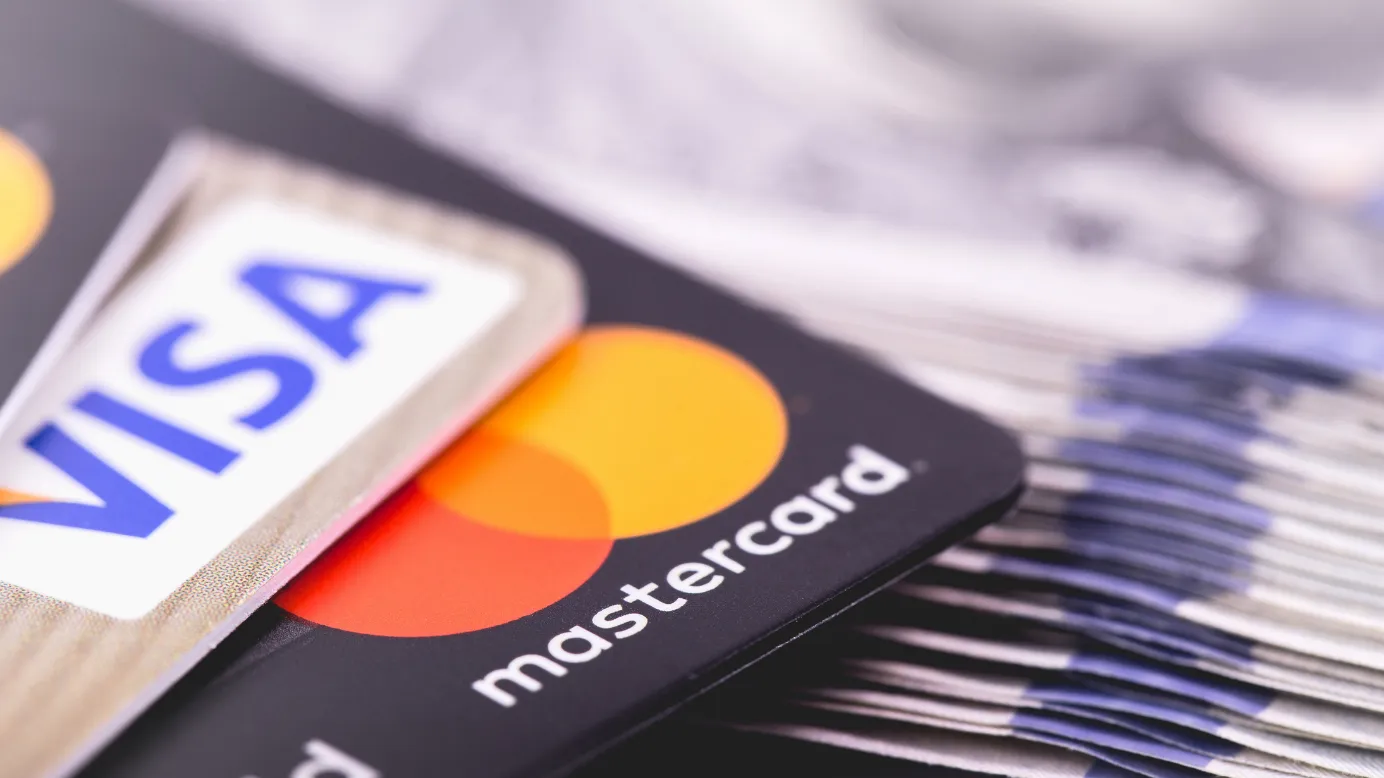El potencial oculto de las tarjetas prepago para recompensar
Las tarjetas de prepago permiten a sus destinatarios gastar dinero en cualquier cosa hasta el importe cargado en la tarjeta. Su facilidad de uso, sencillez y comodidad las convierten en una opción muy deseada para recompensar. Son equivalentes al dinero en efectivo, ofrecen una gratificación instantánea y pueden personalizarse.
En esta página
If you were given an option to choose between money and gifts as a reward, what would you prefer? At least, a majority of them will go with money!
Speaking of rewards, though gift cards have been a popular choice in different verticals, businesses worldwide have witnessed prepaid cards stepping up the game altogether.
¿Qué es una tarjeta prepago?
Prepaid cards are a “stored value” card – much like a credit or debit card – that can be used to pay for goods or services. Unlike credit or debit, however, prepaid cards aren’t dependent on a link to a savings, checking or credit account with a financial institution.
Las tarjetas prepago, una alternativa a las tarjetas bancarias, permiten al beneficiario gastar dinero en cualquier cosa hasta el importe cargado en la tarjeta.
Esta comodidad también hace que las tarjetas prepago sean una opción popular cuando se trata de recibir una recompensa o un incentivo.
Not just that—prepaid cards also offer ease of use, the simplicity, and the convenience of highly-desired rewards. They are equivalent to cash, can deliver instant gratification, are easy to use, customizable based on your business needs, secured, and versatile.
Ya sea para captar nuevos clientes, motivar a los empleados o persuadir a los canales de venta, las tarjetas de prepago son una forma innovadora de que las empresas mantengan a su público interesado.
How do prepaid cards benefit consumers?
Prepaid cards offer a wealth of benefits to consumers: there is less risk of overspending, they’re safer than cash, they’re easy to use and reload and they’re a viable alternative to using traditional credit or debit cards.
- Less risk of overspending: Unlike credit cards, prepaid cards help users stick to a budget by limiting spending to the available balance, making them a great tool for responsible financial management.
- Safer than cash: Prepaid cards are a safer alternative to carrying cash, especially for travelers. Additionally, quick and easy registration ensures protection in case of loss or theft.
- Easy to use and reload: Functioning like traditional debit or credit cards, prepaid cards can be easily reloaded through bank transfers, direct deposits, or cash deposits—both online and in-person.
- An alternative to banks: In 2018 the FDIC reported that 6.5% of US households were unbanked. That leaves 8.4 million US households that still need to operate in the economy without a checking or saving account. Prepaid cards offer unbanked consumers access to essential payment services.
- Secure alternative form of payment: For those concerned about data privacy, prepaid cards offer an extra layer of security, reducing the risk of personal or financial information being compromised.
How can prepaid cards benefit businesses?
Prepaid cards have emerged as a flexible and efficient financial tool for businesses looking to streamline payments, manage expenses, and reward stakeholders. Here’s how they can add value across different business functions:
1. Enhancing customer loyalty
By offering a convenient and preferred payment method, businesses can strengthen relationships with customers, fostering long-term engagement.
2. Expanding customer reach
Offering a dedicated prepaid card for exclusive use at your business gives both new and returning customers an added incentive to shop with you more frequently.
3. Optimizing channel incentives
Businesses relying on distributors, resellers, and partners can use prepaid cards as an efficient way to disburse incentives and bonuses. Instead of managing cash payouts or traditional reimbursement models, companies can instantly transfer rewards onto prepaid cards, reducing administrative burden and ensuring timely payments.
4. Streamlining employee & business expenses
Managing business expenses efficiently is critical for financial control and operational ease. Prepaid corporate cards provide a secure and streamlined solution for both employee expenses and broader business expenditures.
With prepaid cards, employees can easily make approved purchases—from business travel to office supplies—without waiting for reimbursements. Employers, in turn, can set spending limits, track transactions in real time, and prevent overspending. This reduces paperwork, minimizes fraud risks, and enhances budget control.
By integrating prepaid corporate cards, businesses ensure a seamless and transparent financial system, eliminating the hassles of cash reimbursements while providing employees with a convenient payment method.
5. Fleet management & travel expenses
Prepaid fuel and travel cards help streamline fleet expenses by providing drivers with dedicated funds for fuel, maintenance, and other travel-related costs. Businesses can monitor spending in real time, prevent misuse, and eliminate the hassle of handling cash reimbursements
6. Efficient freelancer & gig worker payments
For businesses relying on freelancers, gig workers, or contractors, prepaid cards offer a faster and more flexible alternative to traditional bank transfers. Instead of waiting for lengthy invoice processes, freelancers can receive payments directly onto their prepaid cards, improving cash flow and ensuring timely compensation.
Gig platforms such as Uber have introduced debit cards like the Uber Pro Card, allowing drivers to access their earnings instantly. This system eliminates traditional payment delays, offering freelancers immediate access to their funds and improving overall cash flow
How are prepaid cards better than cash incentives?
Here are some major reasons that make prepaid cards a better alternative to cash when rewarding or incentivizing someone.
Categoría | Tarjetas de prepago | Efectivo |
Security & Control | 100% secured with a unique PIN, can only be activated by the recipient. Can be easily enabled or disabled if needed. Provides fraud protection and ensures secure transactions. | Not secured, prone to theft, and requires bank details for direct deposit. No such control options are available. No protection against fraud or misuse. |
Distribution & Accessibility | Available in both plastic and virtual formats for seamless, contactless delivery. Instant disbursal via email or digital platforms, regardless of location. It can be sent in bulk to multiple recipients, saving time and effort. | It can only be distributed via direct deposit or physically handing it over. Cash delivery is complex and inconvenient, especially for remote recipients. Must be distributed individually, making it time-consuming. |
Seguimiento e informes | Usage can be tracked, ensuring accountability. Enables organizations to analyze reward program performance through data tracking. | Cash usage cannot be tracked. No tracking mechanism exists for cash incentives. |
Customization & Personalization | It can be personalized with a brand logo, colors, or name to enhance brand recall. | No branding or customization options available. |
Flexibility & Spending Power | Redeemable online and offline, offering greater spending flexibility. Can be configured as single-use or reloadable for ongoing rewards. | No flexibility—limited to where physical cash can be used. Cash is a one-time transaction with no reload option. |
Financial & Cost Efficiency | Saves on administrative costs compared to handling physical cash. Funds can be preloaded for planned incentives and budget management. | Cash incentives require additional resources for handling and distribution. No option to preload cash in advance. |
Program Implementation & Convenience | It is easy to set up and integrate into incentive programs. | It is difficult to manage incentive programs due to lack of tracking and reporting. |
Types of prepaid cards
Ideal for all types of incentive programs, be it small or large—prepaid cards from renowned networks, enable your program’s participants to have the liberty to choose the way they want to spend on their reward.
This is undeniably a huge leap forward from just getting them to select from a mere catalog of options with pre-selected merchandise.
Prepaid cards come in various forms, and they can be utilized based on the objective of the incentive program:
1. Tarjetas de prepago de circuito abierto
Es uno de los tipos de tarjetas prepago más flexibles y con mayor atractivo. A diferencia de las tarjetas regalo, las tarjetas prepago de bucle abierto no están vinculadas a una marca o tienda concreta. Ofrece a los titulares de la tarjeta la flexibilidad de canjearla por lo que quieran.
Estos tipos de tarjetas son:
- Aceptada universalmente (dondequiera que se acepte la red de la tarjeta emisora).
- Por lo general, estas tarjetas se identifican con un logotipo de Mastercard o Visa y pueden utilizarse en cualquier lugar donde se acepten pagos con tarjeta.
2. Tarjetas digitales de prepago de circuito abierto
These are the digital versions of the open-loop prepaid cards, which provides the flexibility and aesthetics of physical cards, but with extra benefits of digital convenience and instant delivery.
Este tipo de tarjetas pueden ser:
- Se entregan más rápido porque son virtuales por naturaleza
- Recibidos al instante por el destinatario porque pueden enviarse fácilmente por correo electrónico
- El destinatario lo canjeará más rápidamente por cualquier cosa que desee gastar.
3. Tarjetas de prepago multimercado
Conocidas popularmente como tarjetas con la marca de la red, permiten al titular de la tarjeta gastar la recompensa en una categoría determinada o en un grupo específico de comercios. Por ejemplo, puede enviar a sus participantes tarjetas de prepago para varios comercios con la temática "Salud y bienestar", que podrán canjear en distintos spas, gimnasios y otros comercios de salud.
Este tipo de tarjetas le permiten:
- Múltiples opciones para elegir
- Dar libertad creativa
No cabe duda de que las tarjetas prepago son siempre una alternativa mejor y más segura que los incentivos en efectivo. Cuando se utilizan tarjetas prepago para programas de incentivos, se obtiene mucho más que un simple producto de plástico.
Managing employee rewards, partner incentives, and business expenses can quickly become a logistical nightmare—lost receipts, delayed reimbursements, and manual tracking slow down operations. Xoxoday Plum’s prepaid card solution takes the complexity out of the equation by offering a seamless, instant, and controlled way to distribute funds.
Effortless rewards & incentives – Instantly load funds onto prepaid cards for employees, channel partners, and freelancers without administrative delays.
Real-time expense management – Set spending limits, track usage, and prevent overspending—all from a centralized dashboard.
Flexibility & choice – Recipients can use their prepaid card across multiple categories, ensuring a rewarding experience.
Explore Plum and make financial disbursements a breeze!
The hurdles of global rewarding and how prepaid cards can help
Enviar recompensas a nivel mundial es difícil. ¿Ha gestionado alguna vez campañas de marketing o encuestas internacionales para captar nuevos clientes? ¿O persuadido a canales de venta para que compren un producto? ¿O, al menos, ha intentado implicar a empleados remotos? Si es así, probablemente ya conozca los retos que supone recompensar a sus participantes internacionales.
Sending cash is complicated and nearly impossible. No doubt. Okay, this begs to an important question— why not use digital rewards then? Well, they do eliminate the hassle of shipping issues (as the delivery mode is instant and via email) but e-gift cards from popular brands like Amazon, Walmart, or Starbucks have their own limitations.
A majority of them are accepted only in a few countries or maybe, only in countries where they are issued. Take Amazon gift cards for example. When it comes to international flexibility, no one can outrank them but still you don’t have the perk to redeem an amazon.com’s gift card at amazon.de or Amazon Germany’s marketplace.
So, imagine rewarding a US-based amazon e-gift card to someone sitting in Germany? Will that work? Even worse, let’s say that the receiver isn’t an Amazon customer at all. He/she prefers Walmart instead. Then, your reward makes no sense at all.
Por eso las empresas prefieren las tarjetas prepago como modo de recompensa. Como incentivos digitales, las tarjetas prepago (como Visa o MasterCard) sirven como una increíble solución de recompensa.
Prepaid cards, as an incentive, can be delivered in two ways:
- Tarjetas físicas de prepago
- Tarjetas virtuales de prepago
While there is a thrill to receive and hold a plastic prepaid card as a reward, people these days prefer the convenience of mobile or online transactions. Virtual prepaid cards not only meet this expectation but also make reward distribution tamper-proof and instantaneous.
Though the outcome of using them is the same, the benefits of sending virtually prepaid outweigh physical prepaid cards.
Ventajas de las tarjetas virtuales de prepago para recompensar o incentivar a sus destinatarios:
- Entrega inmediata
- Menos costoso
- Emisión y recepción más rápidas
- Redimido más rápido
- Más flexible
- Se acepta en la tienda o en línea
- Conversión automática de divisas
- Disponible en todo el mundo
- Cobertura mundial
Sending a virtual Mastercard or Visa prepaid card is a perfect and hassle-free way to reward or incentivize recipients globally. They are accepted in 150+ countries, with automatic conversions to the corresponding local currency.
Most importantly, prepaid cards give phenomenal power to merchants and companies to understand a user’s purchase behavior.
Por ejemplo, un investigador de mercado que se encuentre en EE.UU. puede comprar tarjetas Visa virtuales de prepago por valor de 50 dólares (en USD) y enviarlas a varios encuestados situados en Australia, India y Canadá. El destinatario puede utilizar la moneda cargada de 50 dólares en AUD, INR y CAD para hacer compras locales.
La diferencia entre unatarjeta regalo y una tarjeta prepagoparece mínima, pero es muy diferente. Es hora de decidir cuál es el mejor regalo.
Conclusión
Normalmente, las tarjetas de prepago se integran con diferentes instrumentos financieros, así como con herramientas de seguimiento, que se desarrollan exclusivamente para ayudar a resolver problemas empresariales.
To conclude, the choice to receive a reward or incentive has changed. The digital era has faded cash transactions. They are no longer preferred. Virtual prepaid cards have taken over because they are a much more efficient and tangible way to deliver a reward. Not just that, it is easier to distribute globally and promises to offer real choices.
Plum makes digital rewards effortless by offering a seamless prepaid card solution that enables businesses to distribute incentives globally with ease. With instant delivery, multi-currency support, real-time tracking, and a vast reward catalog, Plum ensures a rewarding experience for both businesses and recipients.
Say goodbye to outdated cash transactions and embrace the future of digital rewards—book a free demo and we will get you started!
Preguntas frecuentes
1. Why should you choose virtual prepaid gift cards?
Prepaid gift cards are dynamic in nature. They can be used anywhere, either on anything or can be limited to specific spend types. They support both repeat incentives and one-time rewards, which can help drive loyalty. Be it rewarding customer behavior to increase frequent purchases or incentivizing your employees or channel partners for performance-based initiatives, prepaid cards drive engagement.
2. Can prepaid cards be personalized?
Yes, branding a prepaid gift card with your logo and brand name is 100% possible. In fact, branding is an excellent way to create awareness and influence customer behavior. All you need is a good reward payout solution provider to not only help fulfill your card requirements but also enable you to create unique incentives schemes for rewarding your target audience.
3. How do recipients receive a virtual Visa/Mastercard?
El proceso consta de 3 sencillos pasos:
- Step 1: Recipients receive an email, which includes the reward payment, option to register their prepaid card, and a link to claim the loaded currency.
- Step 2: Once the prepaid card registration is completed, their Mastercard or Visa prepaid card number is all set for immediate use.
- Step 3: Recipients also have an option to create digital wallets to easily access and secure their Mastercard or Visa number.
4. Do prepaid cards come with expiration dates?
Sí, tanto las tarjetas prepago físicas como las virtuales (como Visa o Mastercard) tienen fecha de caducidad. Sin embargo, esto también depende del tipo de tarjeta Mastercard o Visa que elija. La mayoría caducan entre 6 y 12 meses después de la fecha de emisión.
5. Should you use a Mastercard or a Visa prepaid card?
All Mastercard and Visa prepaid cards work the same way. However, your choice largely depends on the currency in which you want the reward to be issued.
6. What is the global coverage of Mastercard and Visa prepaid like?
Speaking of country coverage, Visa is accepted in 200+ countries and territories whereas Mastercard is accepted in 210 countries. As far as global acceptance is concerned, Visa is on the higher side at 56.7 million than Mastercard which is at 47.7 million. Overall, both Visa and Mastercard have similar global acceptance.


















